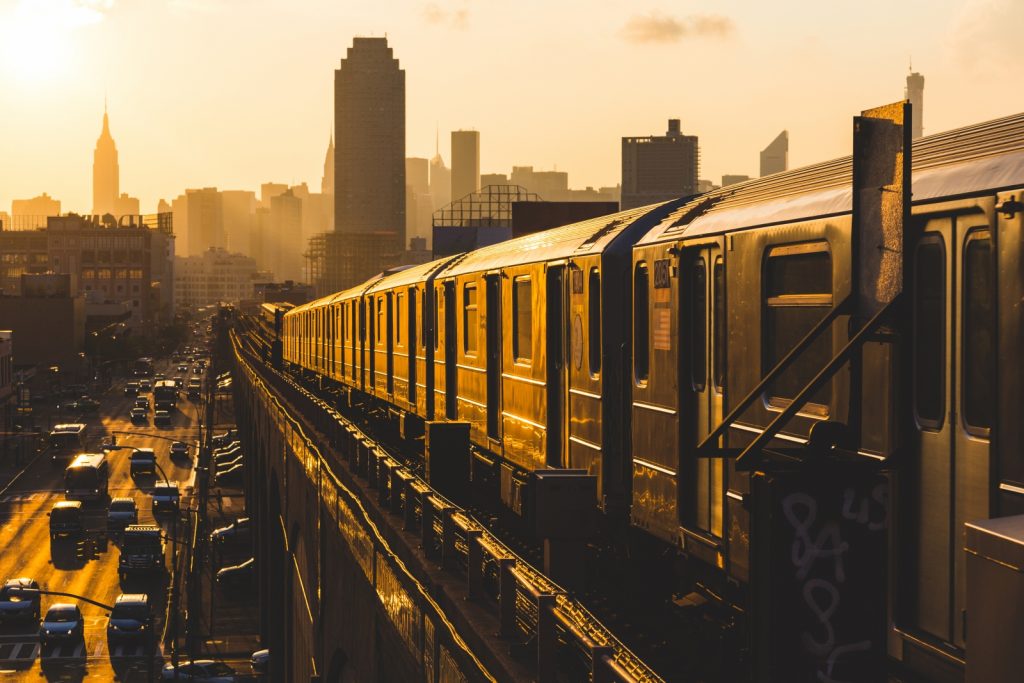
This year in New York City real estate, rents peaked, luxury wallowed, and affordable homes became increasingly hard to find. The city economy boomed, but for many New Yorkers, affordability remained an enormous challenge. Despite these issues, a majority of New York voters agreed that a mayor who ran on ending New York’s tale of two cities should stay in office for another term. In the next year, we’ll be watching more luxury supertalls going up, as well as what’s going down in the mayor’s office. Here are five big trends for 2018 we’re willing to bet on.
Transportation Changes Will Drive New Demand
New Yorkers took complaining about the subway to a new level in 2017, but real estate prices in the city remain defined by this transportation backbone. New Yorkers hoping for a convenient trip to the office should bear in mind two major changes coming in 2018. First, the NYC Ferry service that expanded this year is set to both up its capacity in 2018 and extend its reach up Manhattan’s eastern shore and into the Bronx. Second, the L train shutdown scheduled for 2019 will loom large. Anyone signing a 12-month lease after May will need a commuting plan that doesn’t depend on riding through the Canarsie Tunnel to 14th Street. Both trends factored into rents and prices in 2017, but we expect their effects to be greater in the coming year.
Rents Will Fall and Concessions Will Rise
As massive new high-end rental developments opened across the city, a seven-year surge in rents appeared to peak in 2017. As a result, landlords across the city started getting creative with concessions to lure tenants. While the city’s economic strength will limit the extent to which asking rents fall, a continued pipeline of new buildings promises to keep a lid on future increases and gives a negotiating edge to prospective tenants. Rents will inevitably fall to meet market demand, but even then, concessions are unlikely to go away. Anyone looking for an apartment in 2018 should be asking prospective landlords for a month or two free. Those planning to renew leases in 2018 would be well advised to check listings for the pulse of the market in their neighborhood. Our big question: Will the prevalence of concessions in new leases prompt more New Yorkers to consider moving in the coming year?
Renters Won’t Be Fazed By the Quirky Amenity Craze
With newly constructed high-end buildings continuing to dominate rental and sales inventories, expect developers and property managers to go to quirky new lengths to assure prospective tenants that their buildings are unique. Expect cooking classes, wine tastings, and puppet shows for the kids to be advertised at buildings in areas dense with new developments. These may be convenient and fun, but with the fruits of the world’s greatest city at the doorstep, we bet few will be swayed to sign a lease on these perks alone. Even most New Yorkers able to pay $3,700 for a studio would prefer to pay $3,600 in the building across the street. In 2018, an empty table in a quiet lobby with good WiFi could become the most enticing amenity of all, as New Yorkers increasingly look to unconventional spaces ranging from WeWork to The Wing to be productive.
Luxury Prices Will Hit New Lows
Manhattan luxury prices have slid to levels not seen since 2014, but with new arrivals like Tribeca’s 125 Greenwich and Nomad’s 262 Fifth, developers are continuing to remake the city. Meanwhile, they’re adding to the backlog of luxury inventory and shrugging off the $16 million discount a unit in One57 sold for in a recent foreclosure auction. However, even foreign billionaires seeking the stability of the U.S. market will question the financial wisdom of backing endless one-upmanship as the city sprouts new tentacles to the sky. Cash-flush global titans will continue to seek out trophy pied-à-terres atop the city’s highest perches, but the number of remaining buyers are unlikely to fill the looming supply. Expect the slump to have knock-on effects on the luxury buildings of eras past. While lower prices are on the way for the ultra-rich, the extent to which this slump trickles down to normal-rich New Yorkers is what we’ll be watching in 2018.
Homes Under $1 Million Will See Heightened Competition
Despite the cranes on the skyline, upward pressure on prices will remain for most New Yorkers. For better or worse, New York has become an even bigger magnet for talent and jobs than ever before, and with more high-paying jobs come more workers with cash to potentially outbid New York’s existing residents. While popular attention has focused on Amazon’s search for a home for its second headquarters, firms like Netflix and Spotify are opening new offices in Manhattan, and others, like Google and Amazon itself, are expanding their footprints. As a result, waves of New Yorkers will be searching for affordable homes for years to come and will face increasing competition. Buyers holding out for a major downturn in the market to pounce on homes priced below $1,000,000 may regret their decision to wait, and many will turn to the outer boroughs to stay within their budget.